Dongfang Liu
KGIF: Optimizing Relation-Aware Recommendations with Knowledge Graph Information Fusion
Jan 07, 2025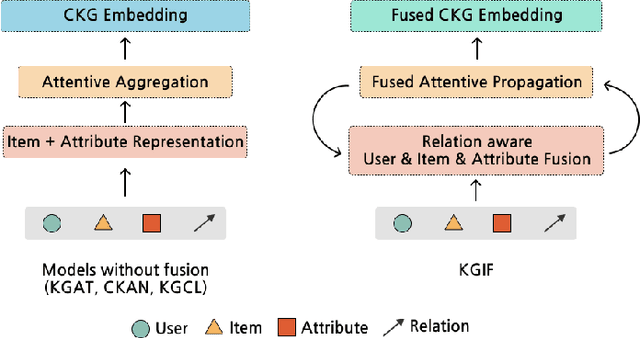
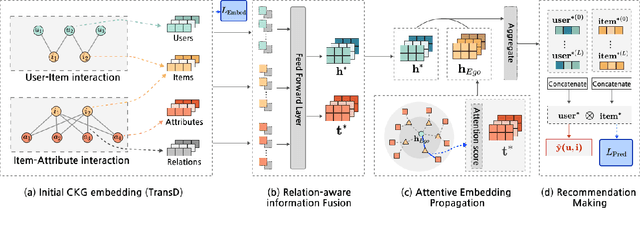
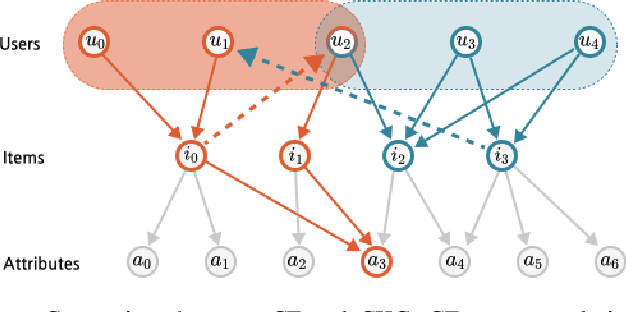
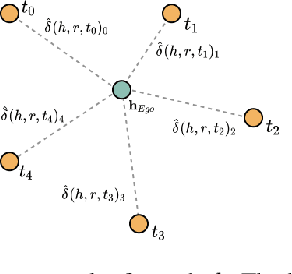
Abstract:While deep-learning-enabled recommender systems demonstrate strong performance benchmarks, many struggle to adapt effectively in real-world environments due to limited use of user-item relationship data and insufficient transparency in recommendation generation. Traditional collaborative filtering approaches fail to integrate multifaceted item attributes, and although Factorization Machines account for item-specific details, they overlook broader relational patterns. Collaborative knowledge graph-based models have progressed by embedding user-item interactions with item-attribute relationships, offering a holistic perspective on interconnected entities. However, these models frequently aggregate attribute and interaction data in an implicit manner, leaving valuable relational nuances underutilized. This study introduces the Knowledge Graph Attention Network with Information Fusion (KGIF), a specialized framework designed to merge entity and relation embeddings explicitly through a tailored self-attention mechanism. The KGIF framework integrates reparameterization via dynamic projection vectors, enabling embeddings to adaptively represent intricate relationships within knowledge graphs. This explicit fusion enhances the interplay between user-item interactions and item-attribute relationships, providing a nuanced balance between user-centric and item-centric representations. An attentive propagation mechanism further optimizes knowledge graph embeddings, capturing multi-layered interaction patterns. The contributions of this work include an innovative method for explicit information fusion, improved robustness for sparse knowledge graphs, and the ability to generate explainable recommendations through interpretable path visualization.
Exploring the Adversarial Vulnerabilities of Vision-Language-Action Models in Robotics
Nov 22, 2024



Abstract:Recently in robotics, Vision-Language-Action (VLA) models have emerged as a transformative approach, enabling robots to execute complex tasks by integrating visual and linguistic inputs within an end-to-end learning framework. While VLA models offer significant capabilities, they also introduce new attack surfaces, making them vulnerable to adversarial attacks. With these vulnerabilities largely unexplored, this paper systematically quantifies the robustness of VLA-based robotic systems. Recognizing the unique demands of robotic execution, our attack objectives target the inherent spatial and functional characteristics of robotic systems. In particular, we introduce an untargeted position-aware attack objective that leverages spatial foundations to destabilize robotic actions, and a targeted attack objective that manipulates the robotic trajectory. Additionally, we design an adversarial patch generation approach that places a small, colorful patch within the camera's view, effectively executing the attack in both digital and physical environments. Our evaluation reveals a marked degradation in task success rates, with up to a 100\% reduction across a suite of simulated robotic tasks, highlighting critical security gaps in current VLA architectures. By unveiling these vulnerabilities and proposing actionable evaluation metrics, this work advances both the understanding and enhancement of safety for VLA-based robotic systems, underscoring the necessity for developing robust defense strategies prior to physical-world deployments.
Target-driven Attack for Large Language Models
Nov 13, 2024Abstract:Current large language models (LLM) provide a strong foundation for large-scale user-oriented natural language tasks. Many users can easily inject adversarial text or instructions through the user interface, thus causing LLM model security challenges like the language model not giving the correct answer. Although there is currently a large amount of research on black-box attacks, most of these black-box attacks use random and heuristic strategies. It is unclear how these strategies relate to the success rate of attacks and thus effectively improve model robustness. To solve this problem, we propose our target-driven black-box attack method to maximize the KL divergence between the conditional probabilities of the clean text and the attack text to redefine the attack's goal. We transform the distance maximization problem into two convex optimization problems based on the attack goal to solve the attack text and estimate the covariance. Furthermore, the projected gradient descent algorithm solves the vector corresponding to the attack text. Our target-driven black-box attack approach includes two attack strategies: token manipulation and misinformation attack. Experimental results on multiple Large Language Models and datasets demonstrate the effectiveness of our attack method.
Visual Fourier Prompt Tuning
Nov 02, 2024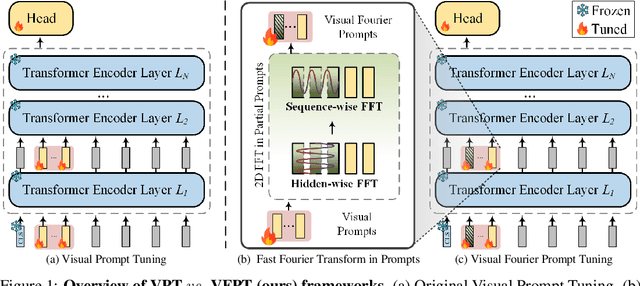

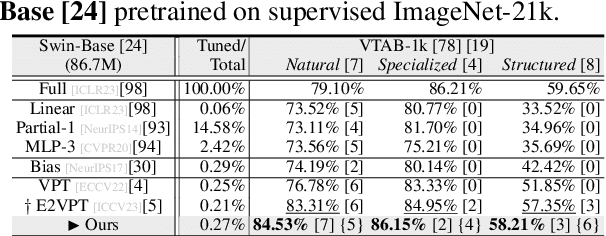
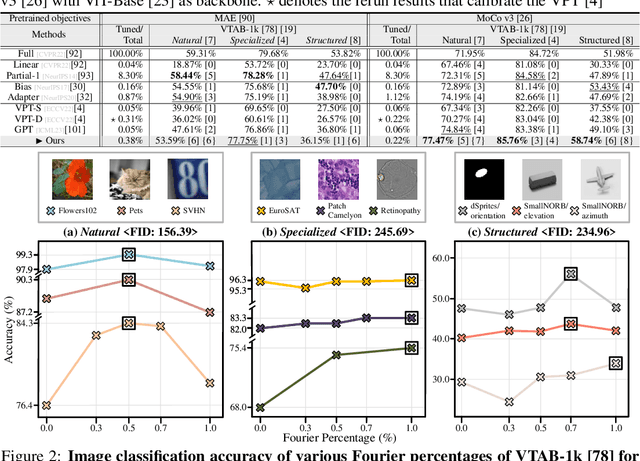
Abstract:With the scale of vision Transformer-based models continuing to grow, finetuning these large-scale pretrained models for new tasks has become increasingly parameter-intensive. Visual prompt tuning is introduced as a parameter-efficient finetuning (PEFT) method to this trend. Despite its successes, a notable research challenge persists within almost all PEFT approaches: significant performance degradation is observed when there is a substantial disparity between the datasets applied in pretraining and finetuning phases. To address this challenge, we draw inspiration from human visual cognition, and propose the Visual Fourier Prompt Tuning (VFPT) method as a general and effective solution for adapting large-scale transformer-based models. Our approach innovatively incorporates the Fast Fourier Transform into prompt embeddings and harmoniously considers both spatial and frequency domain information. Apart from its inherent simplicity and intuitiveness, VFPT exhibits superior performance across all datasets, offering a general solution to dataset challenges, irrespective of data disparities. Empirical results demonstrate that our approach outperforms current state-of-the-art baselines on two benchmarks, with low parameter usage (e.g., 0.57% of model parameters on VTAB-1k) and notable performance enhancements (e.g., 73.20% of mean accuracy on VTAB-1k). Our code is avaliable at https://github.com/runtsang/VFPT.
Visual Agents as Fast and Slow Thinkers
Aug 16, 2024



Abstract:Achieving human-level intelligence requires refining cognitive distinctions between System 1 and System 2 thinking. While contemporary AI, driven by large language models, demonstrates human-like traits, it falls short of genuine cognition. Transitioning from structured benchmarks to real-world scenarios presents challenges for visual agents, often leading to inaccurate and overly confident responses. To address the challenge, we introduce FaST, which incorporates the Fast and Slow Thinking mechanism into visual agents. FaST employs a switch adapter to dynamically select between System 1/2 modes, tailoring the problem-solving approach to different task complexity. It tackles uncertain and unseen objects by adjusting model confidence and integrating new contextual data. With this novel design, we advocate a flexible system, hierarchical reasoning capabilities, and a transparent decision-making pipeline, all of which contribute to its ability to emulate human-like cognitive processes in visual intelligence. Empirical results demonstrate that FaST outperforms various well-known baselines, achieving 80.8% accuracy over VQA^{v2} for visual question answering and 48.7% GIoU score over ReasonSeg for reasoning segmentation, demonstrate FaST's superior performance. Extensive testing validates the efficacy and robustness of FaST's core components, showcasing its potential to advance the development of cognitive visual agents in AI systems.
Radiance Field Learners As UAV First-Person Viewers
Aug 10, 2024
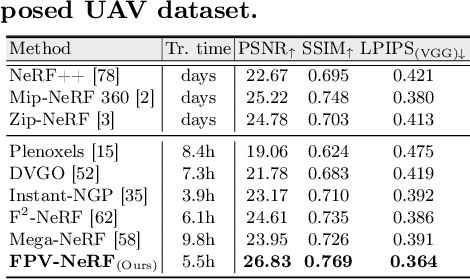

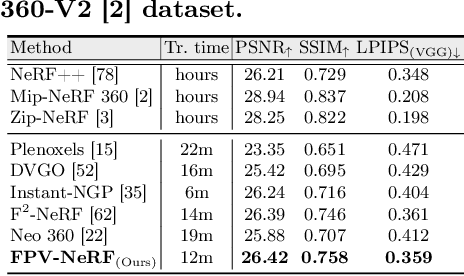
Abstract:First-Person-View (FPV) holds immense potential for revolutionizing the trajectory of Unmanned Aerial Vehicles (UAVs), offering an exhilarating avenue for navigating complex building structures. Yet, traditional Neural Radiance Field (NeRF) methods face challenges such as sampling single points per iteration and requiring an extensive array of views for supervision. UAV videos exacerbate these issues with limited viewpoints and significant spatial scale variations, resulting in inadequate detail rendering across diverse scales. In response, we introduce FPV-NeRF, addressing these challenges through three key facets: (1) Temporal consistency. Leveraging spatio-temporal continuity ensures seamless coherence between frames; (2) Global structure. Incorporating various global features during point sampling preserves space integrity; (3) Local granularity. Employing a comprehensive framework and multi-resolution supervision for multi-scale scene feature representation tackles the intricacies of UAV video spatial scales. Additionally, due to the scarcity of publicly available FPV videos, we introduce an innovative view synthesis method using NeRF to generate FPV perspectives from UAV footage, enhancing spatial perception for drones. Our novel dataset spans diverse trajectories, from outdoor to indoor environments, in the UAV domain, differing significantly from traditional NeRF scenarios. Through extensive experiments encompassing both interior and exterior building structures, FPV-NeRF demonstrates a superior understanding of the UAV flying space, outperforming state-of-the-art methods in our curated UAV dataset. Explore our project page for further insights: https://fpv-nerf.github.io/.
* Accepted to ECCV 2024
Diff-PIC: Revolutionizing Particle-In-Cell Simulation for Advancing Nuclear Fusion with Diffusion Models
Aug 03, 2024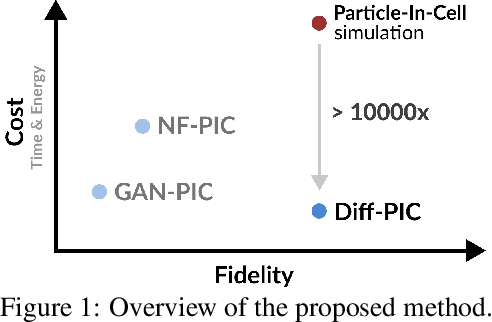
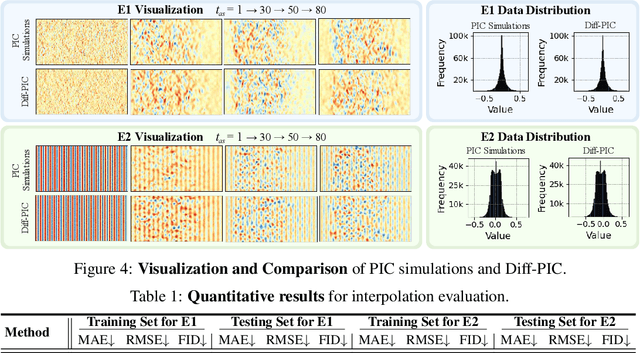

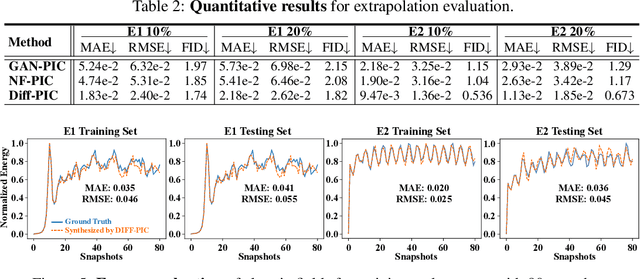
Abstract:Sustainable energy is a crucial global challenge, and recent breakthroughs in nuclear fusion ignition underscore the potential of harnessing energy extracted from nuclear fusion in everyday life, thereby drawing significant attention to fusion ignition research, especially Laser-Plasma Interaction (LPI). Unfortunately, the complexity of LPI at ignition scale renders theory-based analysis nearly impossible -- instead, it has to rely heavily on Particle-in-Cell (PIC) simulations, which is extremely computationally intensive, making it a major bottleneck in advancing fusion ignition. In response, this work introduces Diff-PIC, a novel paradigm that leverages conditional diffusion models as a computationally efficient alternative to PIC simulations for generating high-fidelity scientific data. Specifically, we design a distillation paradigm to distill the physical patterns captured by PIC simulations into diffusion models, demonstrating both theoretical and practical feasibility. Moreover, to ensure practical effectiveness, we provide solutions for two critical challenges: (1) We develop a physically-informed conditional diffusion model that can learn and generate meaningful embeddings for mathematically continuous physical conditions. This model offers algorithmic generalization and adaptable transferability, effectively capturing the complex relationships between physical conditions and simulation outcomes; and (2) We employ the rectified flow technique to make our model a one-step conditional diffusion model, enhancing its efficiency further while maintaining high fidelity and physical validity. Diff-PIC establishes a new paradigm for using diffusion models to overcome the computational barriers in nuclear fusion research, setting a benchmark for future innovations and advancements in this field.
Inertial Confinement Fusion Forecasting via LLMs
Jul 15, 2024Abstract:Controlled fusion energy is deemed pivotal for the advancement of human civilization. In this study, we introduce $\textbf{Fusion-LLM}$, a novel integration of Large Language Models (LLMs) with classical reservoir computing paradigms tailored to address challenges in Inertial Confinement Fusion ($\texttt{ICF}$). Our approach offers several key contributions: Firstly, we propose the $\textit{LLM-anchored Reservoir}$, augmented with a fusion-specific prompt, enabling accurate forecasting of hot electron dynamics during implosion. Secondly, we develop $\textit{Signal-Digesting Channels}$ to temporally and spatially describe the laser intensity across time, capturing the unique characteristics of $\texttt{ICF}$ inputs. Lastly, we design the $\textit{Confidence Scanner}$ to quantify the confidence level in forecasting, providing valuable insights for domain experts to design the $\texttt{ICF}$ process. Extensive experiments demonstrate the superior performance of our method, achieving 1.90 CAE, 0.14 $\texttt{top-1}$ MAE, and 0.11 $\texttt{top-5}$ MAE in predicting Hard X-ray ($\texttt{HXR}$) energies of $\texttt{ICF}$ tasks, which presents state-of-the-art comparisons against concurrent best systems. Additionally, we present $\textbf{Fusion4AI}$, the first $\texttt{ICF}$ benchmark based on physical experiments, aimed at fostering novel ideas in plasma physics research and enhancing the utility of LLMs in scientific exploration. Overall, our work strives to forge an innovative synergy between AI and plasma science for advancing fusion energy.
AMD: Automatic Multi-step Distillation of Large-scale Vision Models
Jul 05, 2024Abstract:Transformer-based architectures have become the de-facto standard models for diverse vision tasks owing to their superior performance. As the size of the models continues to scale up, model distillation becomes extremely important in various real applications, particularly on devices limited by computational resources. However, prevailing knowledge distillation methods exhibit diminished efficacy when confronted with a large capacity gap between the teacher and the student, e.g, 10x compression rate. In this paper, we present a novel approach named Automatic Multi-step Distillation (AMD) for large-scale vision model compression. In particular, our distillation process unfolds across multiple steps. Initially, the teacher undergoes distillation to form an intermediate teacher-assistant model, which is subsequently distilled further to the student. An efficient and effective optimization framework is introduced to automatically identify the optimal teacher-assistant that leads to the maximal student performance. We conduct extensive experiments on multiple image classification datasets, including CIFAR-10, CIFAR-100, and ImageNet. The findings consistently reveal that our approach outperforms several established baselines, paving a path for future knowledge distillation methods on large-scale vision models.
EAVE: Efficient Product Attribute Value Extraction via Lightweight Sparse-layer Interaction
Jun 10, 2024Abstract:Product attribute value extraction involves identifying the specific values associated with various attributes from a product profile. While existing methods often prioritize the development of effective models to improve extraction performance, there has been limited emphasis on extraction efficiency. However, in real-world scenarios, products are typically associated with multiple attributes, necessitating multiple extractions to obtain all corresponding values. In this work, we propose an Efficient product Attribute Value Extraction (EAVE) approach via lightweight sparse-layer interaction. Specifically, we employ a heavy encoder to separately encode the product context and attribute. The resulting non-interacting heavy representations of the context can be cached and reused for all attributes. Additionally, we introduce a light encoder to jointly encode the context and the attribute, facilitating lightweight interactions between them. To enrich the interaction within the lightweight encoder, we design a sparse-layer interaction module to fuse the non-interacting heavy representation into the lightweight encoder. Comprehensive evaluation on two benchmarks demonstrate that our method achieves significant efficiency gains with neutral or marginal loss in performance when the context is long and number of attributes is large. Our code is available \href{https://anonymous.4open.science/r/EAVE-EA18}{here}.
 Add to Chrome
Add to Chrome Add to Firefox
Add to Firefox Add to Edge
Add to Edge